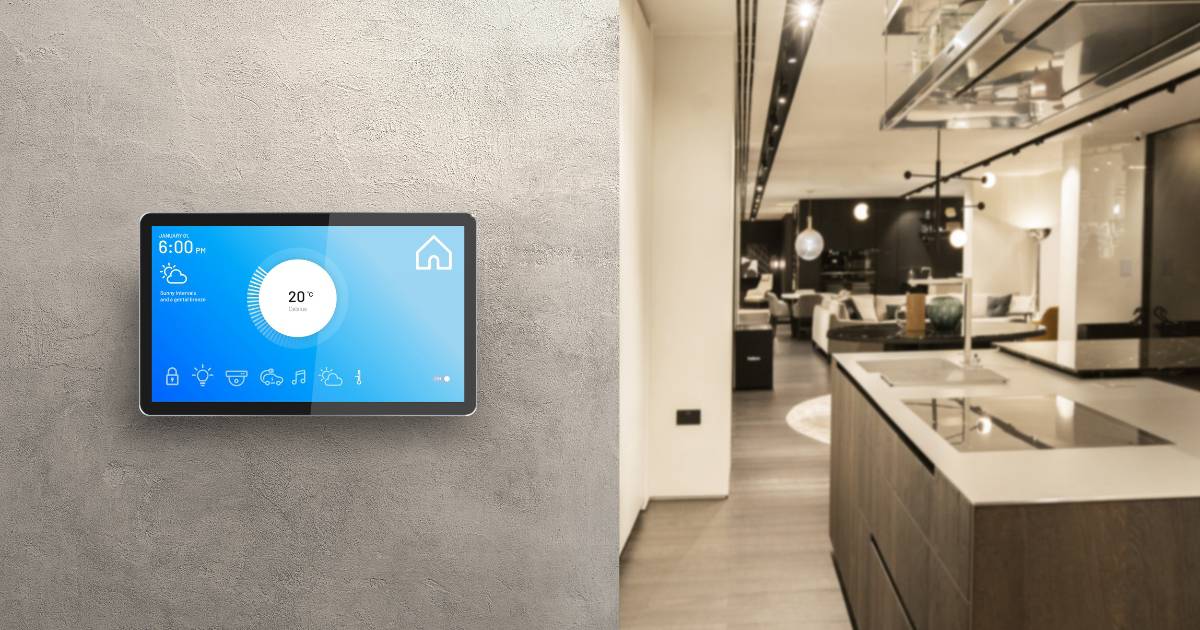Despite what Back to The Future led us to believe, flying hoverboards are not as popular and widespread as they once thought they’d be. In fact, they’ve yet to be invented.
Although disappointingly short on flying hoverboards, today’s rapidly advancing world of sustainable smart technology has created other more ground-breaking inventions than 1980s fiction concocted.
As sustainable technology gains momentum, its adoption and implementation bring their own considerations and controversies. The move to green tech, for example, can also mean a rise in costs, job losses and difficulty in implementing these technologies.
But this is not a fait accompli.
While, as with anything progress-related, there are costs and trade-offs, but the potential benefits of green technologies can far outpace their risks if adopted through a conscious lens of social and environmental sustainability.
By delving into real-world examples of the fascinating and innovative sustainable technology already taking shape, this article will explore the controversies surrounding sustainable technology and its importance in building a more sustainable future for all.
Exploring Sustainability Innovation Through Technology
What Is Sustainable Smart Technology?
In a world filled with Alexa, ChatGPT, and smart TVs, smart technology has become an integral part of daily life for many people around the globe—but what about smart sustainable technology?
Is it already ingrained within the functions of modern life, and what is smart sustainable tech anyways?
Promising to improve the overall efficiency of the systems we use, ‘sustainable smart technology’ is a hot topic in the tech sector. But it’s not just a buzzword being thrown around by tech companies to describe the next slightly updated smartphone to rack up sales, but rather the best descriptor of the cutting-edge technologies revolutionizing our future.
Let’s start by defining the base concept of smart technology.
Smart technology refers to devices or systems that use advanced programming and data-driven insights—such as artificial intelligence (AI), machine learning, and the Internet of Things (IoT)—to automate, optimize, and enhance various processes in our daily lives. Its goal is to make our lives easier, more efficient, and more convenient.
Sustainable smart technology, then, refers to using these advanced technologies to reduce the harmful impact of modern life on our environment. From smart HVAC systems to motorized windows, these inventions cater to a fast-paced world as living conditions deteriorate.
In small ways, green technologies have already found their way into our homes and cities. Perhaps, you have a motion sensor, solar-powered lights or a smart thermostat that adjusts to your home’s temperature to save energy.
As useful as these one-off systems already are for reducing an individual or municipality’s carbon footprint, the potential for smart tech to find its way into every aspect of human life may provide significant sustainable solutions to climate-related problems.
Examples Of Innovative Sustainable Technology
Though still in its infancy, companies are now adopting smart sustainable technologies to reduce their environmental impact and improve their bottom line.
Apple, the company so widespread that you’ll no doubt see more iPhones on your morning commute than you do smiles, is one of the leaders in sustainable tech. In addition to making improvements to the recyclability of their devices, all Apple stores, offices, and data centers are now powered by 100% renewable energy.
Similarly, tech powerhouse Google has invested heavily in renewable energy, including wind and solar power, and is using advanced data analytics and machine learning algorithms to improve the efficiency of its data centers and reduce energy consumption.
But that’s just a generic taste of some of the more well-known sustainable tech concepts. Smart sustainable technology goes much deeper:
- Meta: A company pioneering the next phase of virtual reality (VR) technology, Meta’s Oculus Rift VR software designed to make employee engagement training more, well, engaging, especially regarding sustainability education and workplace sustainability.
- Walmart: The retail giant is using IoT sensors and machine learning algorithms to optimize its energy use, reduce waste, and improve its supply chain efficiency.
- Tesla: The electric vehicle company is using advanced battery technology and solar power to create a sustainable energy ecosystem that reduces dependence on fossil fuels.
- Schneider Electric: The energy management company is using IoT sensors and data analytics to optimize energy use and reduce waste in buildings and factories.
- IBM: By using machine learning algorithms and predictive analytics, they’re helping improve energy efficiency and reduce waste in buildings and cities.
It’s not just companies who are jumping on the smart sustainable technology bandwagon. Governments worldwide are taking advantage of innovative sustainable technology advancements and creating a more sustainable future.
Sweden aims to become the world’s first fossil fuel-free nation by 2045. With heavy investments in renewable energy sources like wind and hydropower, they are set to build a massive underground storage facility for thermal energy.
India is developing a way to capture carbon emissions and turn them into baking soda. Yes, you read that right—baking soda.
Smart Cities & Technology Innovations
Smart cities and smart buildings are perhaps the most concrete (pun intended) example of sustainability innovations being implemented on a widespread but almost unnoticeable scale.
What Is Smart Building Technology?
Ten years ago, the words ‘smart home’ made us think of the idealized, rich houses seen in TV shows and movies in which characters lounge around in lavish homes, using voice control to turn off lights and music and adjust heating levels.
That or the ones in which the house takes on an insidious mind of its own, as in the 1999 Disney Channel original movie Smart House.
Little did we know ‘smart homes’ would become so normalized and downright domestic.
Using technology to make our lives more convenient, the intelligent home boasts accessibility and convenience, but what about sustainability? Can a smart home be environmentally friendly?
Thanks to engineering companies who are leading the way with impressive examples of sustainability innovation, yes.
Take, for example, smart HVAC systems that optimize the temperature of buildings using motion sensors and thermostats.
Boston University has developed a system that uses sensors and fish-eye cameras to detect occupants and adjust the temperature based on its findings. These systems, which adapt over time, save energy and money.
Another excellent example of sustainable smart technology in our homes is power-saving lighting options. Like thermostats we can adjust from our phones, bright lighting is another app-controlled option taking the market by storm. The Philips Hue lighting system uses up to 80% less energy than regular bulbs. They are voice-controlled and have preset brightness and color settings that can be turned on at your command.
What could entire buildings made of smart technologies look like?
We need not wonder, but rather look to some real-world examples:
- The Edge building in Amsterdam has various energy-saving features, including solar panels, rainwater harvesting and a smart ventilation system.
- In Spain, the Cygnus building is entirely self-sufficient thanks to its range of innovative sustainable technologies. It generates its own electricity using wind turbines and solar panels. It also collects rainwater for irrigation and flushing toilets.
- Siemens’ Crystal in London uses a range of smart technologies to reduce its environmental impact and improve energy efficiency, like a rainwater harvesting system, solar panels, and a smart lighting system that adjusts to the weather and building occupancy.
- Manchester, UK’s CIS Tower is a “solar panel converted skyscraper” that has been retrofitted with a range of smart technologies like a smart lighting system, rainwater harvesting system, biomass boiler that generates renewable energy, and of course, an entirely solar panel covered exterior.
- The Tower at PNC Plaza in Pittsburgh, PA is one of the greenest skyscrapers in the world thanks to a green roof, a solar chimney, and a natural ventilation system, to reduce energy consumption and create a comfortable and healthy indoor environment.
What About Smart Cities & Sustainable Technology?
While a whopping 65% of the world’s population lives in urban areas, applying these sustainable tech infrastructure concepts on a larger scale are critical to decreasing the massive impact urban hubs have on the environment.
Green technologies are linking smart cities and sustainability by taking concepts utilized in smart buildings, but implementing them across entire city areas or industry sectors.
For example, while the Philips Hue lighting system reduced the energy consumption of buildings, Philips’ LumiMotion does the same for city streets. By sensing activity, it can adjust the light levels as is needed, saving up to 80% in energy when no nearby activity is detected.
More and more cities—such as Amsterdam, Barcelona, Songdo, and Yokohama—are exploring a multitude of such technologies to decrease energy consumption, implement water and air quality, and make transportation more efficient and sustainable.
Utrecht, a city in the Netherlands, is greening rooftops, converting bus stops into biodiversity supporting “bee stops”, and replacing its bus fleet with Ebusco electric vehicles, reducing its carbon emissions by a staggering 50%.
These tech-centric cityscapes are no longer a pipe dream or premise of a futuristic sci-fi movie, but a reality. As companies and engineers push forward and continue to innovate, are there any drawbacks to these impressive examples of innovative tech?
Smart & Sustainable Technology: Can They Intersect?
Sustainability and technology may sound like an unlikely pair.
Technology is after all an ever-adapting, consumer-driven sector that prides itself on creating the latest and greatest in a long line of products. Yet our planet and its resources are finite, and quickly dissipating, driven partially by our growing demand for devices.
So can sustainability and technology realistically intersect? Despite the countless adverts for pre-loved tech and trade-in schemes, we can’t be fooled.
Every year, companies release new products, encouraging us to upgrade and discard our old devices. Don’t forget the energy consumption that comes along with all those devices—data centers and servers are notorious for high energy usage.
Overall, the tech industry has become synonymous with planned obsolescence, unsustainable mineral mining, and e-waste (50 million tons of it every single year).
But not all is black and white. As tech companies begin to recognize the importance of sustainability to the consumer and our Earth, they are taking steps to reduce their environmental impact.
Apple has a company-wide goal of being carbon-neutral by 2030 and is working to reduce the carbon footprint of its products. Google has been carbon neutral since 2007 and has pledged to operate on carbon-free energy by 2035.
What’s more, the emergence of smart sustainable technologies not only aims to make technology itself more sustainable, but lessen the impact of other everyday activities such as commuting to work.
While devices and tech materials themselves still have a long way to go in terms of sustainability, the benefits of sustainable smart technology have the potential to far counteract its impact.
Take solar panels, for example. While they require mining of materials and don’t have terribly great lifespans or disposal options, their reduction of our reliance on fossil fuels tips the scales in favor of sustainability overall.
So, can technology ever be truly sustainable?
It’s a difficult question to answer, but it is clear that tech is moving in the right direction. With better material innovation and circular-minded disposal options that could significantly lighten the load of mining and e-waste, smart tech holds the potential to change the world.
The Future Of Sustainable Smart Tech
As the world changes, our expectations also change. A global climate crisis continues to fill our news feeds and underscore the need for decisive action. Although not an answer to the climate crisis as a whole, smart, sustainable technology can provide modern solutions to modern problems.
With each passing day, green technology gains momentum. As our homes, offices and transport slowly become more sustainable and energy efficient, it will become evident that sustainable smart tech is the way forward—whether it’s intelligent windows in our homes or smart lighting cities.
Some argue these technologies are not backed up by hard-science and are costly to implement.
When greenwashing one’s practices is easier than making meaningful change, companies still fall back onto the excuses that cost, time and complication prevent them from making the sustainable switch.
However, the benefits are too obvious to ignore as this technology becomes more accessible and affordable. For companies, not only is it good for the environment, but good for business. Innovative sustainable technology is profitable, and at the end of the day, that’s what companies care about.
Smart sustainable tech isn’t a fleeting trend; we firmly believe it’s here to stay. A win for businesses, consumers and the planet; the next ten years will welcome an acceleration of innovation.
Closing Thoughts On Sustainability Innovations In Smart Technology
From smart buildings to transportation, sustainable technology initiatives are minimizing our carbon footprint and fighting climate change. And this kind of tech is what our world so desperately needs.
While some may argue that it cannot fundamentally be sustainable, these leading innovations are a case in point for achieving a balance of innovation and environmental responsibility.
Sustainable smart technology is pivotal to facing the challenges of climate change head-on and ensuring a better future for future generations. Companies and governments should be held accountable for developing and investing in these initiatives.
Despite the surrounding controversy and skepticism, sustainable smart technology is here to stay and we can only hope that its adoption and implementation is as fast as we need it to be.










